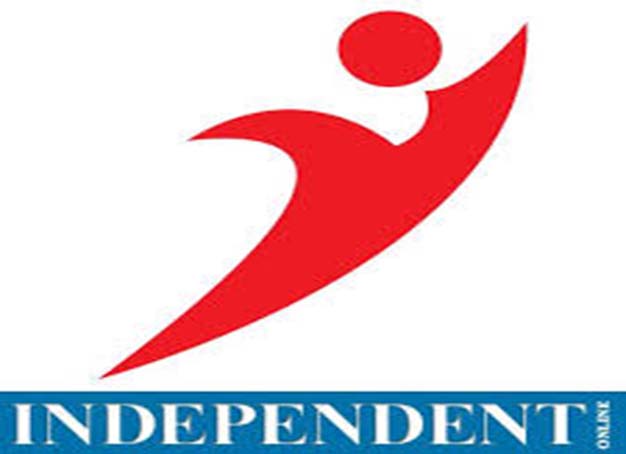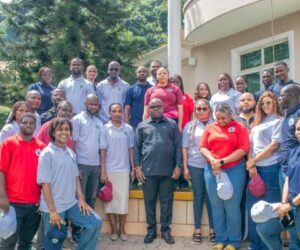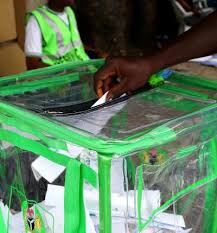0
Despite boasting of over 170 million subscriber base, there has been a very low penetration of 5G services across Nigeria as many 5G phones in Nigeria have no 5G network to connect to.
Latest data released by the telecom industry regulator, the Nigerian Communications Commission (NCC) showed that since its commercial launch in the country, only 5 million active mobile users representing about 3% currently use 5G services.
While the country has been making progress deploying next-generation networks, the gap between access and adoption remains a reality of great concern.
Almost five years after the 5G network’s discourse in Nigeria, the excitement expected from the innovative technology which has the potential to change everything seems to be waning due to slow deployment and unavailability of service for connection by users of 5G devices.
When the first commercial launch of 5G by MTN kicked off in September 2022, the number of the new technology’s subscribers in Nigeria reached 60,000 within five months.
As at May, 2023, MTN covered 13 cities in the country. Of these cities, the coverage was quite limited and still remains so today.
The second 5G licensee, MAFAB Communications, which launched its services in Lagos 13 months after obtaining its licence has been silent without meaningful contribution to complement the efforts of MTN and Airtel operations.
Airtel kicked off its fifth generation (5G) network mmm in June 2023 and registered its presence in four states—Lagos, Ogun, Abuja and Rivers states.
The slow pace of the deployment of 5G service is quite unexciting when compared to the pre-launch period.
There are of course, some factors that will continue to inhibit the deployment adoption of 5G in Nigeria.
Before now, it was generally believed that the adoption of 5G technology would be supported by the increased availability of 5G smartphones and devices which is a concern with many Nigerians because of the cost of 5G-compatible devices and phones.
It was also posited that the deployment of 5G technology is determined by the availability and affordability of 5G devices which are currently limited.
The coverage of optic fiber cable in Nigeria is not also encouraging especially in cities where 5G is expected to be initially deployed. This poor penetration of fiber optics is even worse in most suburban and rural areas.
According to the Nigerian Communications Commission (NCC) report released in 2018, metropolitan cities need over 120,000km of fiber networks for the country’s backhaul interconnectivity. The stated required distance coverage was even before the 5G technology crusade came to being.
Perhaps, the poor fibre infrastructure is one of the reasons why the licensed network operators are still selective of the areas and cities they are covering.
But according to a recent report conducted by Ookla and NCC, ownership of 5G phones in Nigeria is greatly outpacing coverage, leaving many users unconnected to 5G.
The “Nigeria Network Performance & 5G Opportunity Analysis” report released recently, found that 70.9% of 5G-capable devices in Lagos are unable to connect to any 5G network, while the same goes for 65.6% of 5G devices in Abuja.
According to the NCC, the results highlight “significant disparities in network experience across the country,” even in urban areas. That said, the gap is even more pronounced between urban areas where 5G is being deployed and rural areas that remain stuck with 2G and 3G networks.
“This imbalance continues to limit digital inclusion and economic opportunity outside the major cities,” the NCC report said.
The NCC pledged to accelerate 5G deployment in urban areas, as well as 4G and 5G expansion into underserved rural regions. The regulator also advised telcos to focus investment on improving latency and reducing jitter across all networks “to ensure a high-quality experience for real-time applications.”
Among other findings, the NCC/Ookla report named the Federal Capital Territory (FCT) and Lagos as the top-performing regions, with network performance 40-50% better than the national average.
The report also ranked MTN Nigeria as the top performance leader, consistently delivering the highest download and upload speeds with strong latency and jitter metrics. Airtel Nigeria followed closely in download performance but still struggles with latency – in fact, its 4G network performs better than its 5G network, the report said.
Meanwhile, Glo and T2 Mobile (formerly 9mobile) are lagging behind in terms of performance and network stability, with T2 scoring especially poorly in latency and jitter problems.
However, the low pace of deployment and adoption is not peculiar to Nigeria alone, but for the whole continent of Africa.
According to a new report from the International Telecommunication Union and the United Nations Educational, Scientific and Cultural Organisation (UNESCO), only 1.2 percent of Africans currently have access to 5G networks compared with a global average of more than 20 percent, a sign that the continent remains at an early stage in accessing next-generation mobile technology.
The State of Broadband in Africa 2025 report says that while Africa has made strong progress in mobile connectivity, the newest wireless technology (5G) remains largely out of reach for the continent’s 1.24 billion inhabitants.
However, industry projections suggest this could change dramatically over the next decade, with 5G expected to reach 17 percent penetration by 2030.
The slow 5G rollout contrasts sharply with Africa’s mobile success story in previous generations of wireless technology. Currently, 3G networks reach 77 percent of the continent’s population, while 4G coverage extends to 44.3 percent of people.
Comparatively, the development and growth of 5G in a country like China has been remarkable, as the country’s three major mobile operators in Q3 2025 booked stable profit gains and continued growth in 5G users six years after the commercial launch of the technology, taking their combined total to a staggering 1.14 billion.
China Mobile added 70 million 5G network subscribers year-on-year to end-September 2025 with 622 million.








